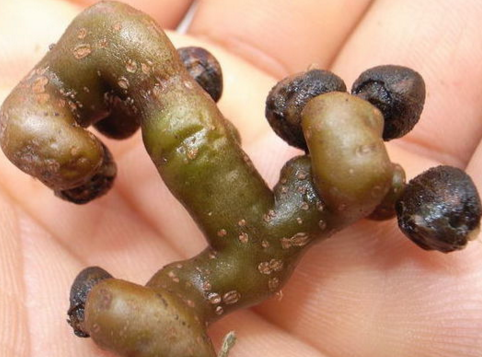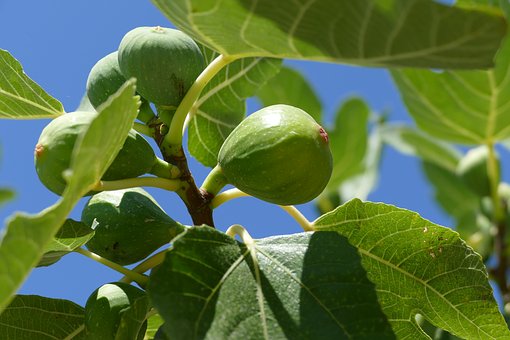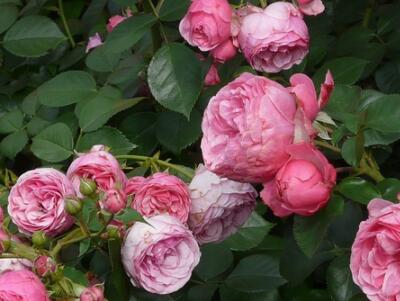The efficacy and function of Zizyphus jujuba, the producing area and the planting method of the jujube tree.
Zizyphus jujuba, also known as longevity fruit, chicken claws, Lijiang Fructus Aurantii and so on, the fruit shape is like ten thousand characters, so it is called Wanshou fruit tree. The fruit is ripe and can be eaten raw, the pulp is pulpy, there is no stone, the seeds are exposed outside the pulp, the pulp is sweet and slightly sweet, and it can also be made into soup. After introducing so much, let's take a look at its efficacy and function, the origin and planting method of jujube tree.

I. the efficacy and function of Zizyphus jujuba
(1) Pharmacological action
Zizyphus jujuba is a kind of traditional Chinese medicine, which is the fruit of Rhamnaceae tree plant with fleshy stalk. Sweet and sour, returning to the heart, spleen and stomach meridians.
1. Qingre Shengjin: for febrile upset, thirst, vomiting, adverse stool, etc., take this product 10Mel 25g, water frying service.
2. Detoxification: it is used for excessive drinking and has the function of relieving thirst and annoyance. Take 20g of this product and fry tea for future generations.
3. Sober up and calm the mind: trifoliate fruit contains a lot of glucose and organic acids, which can not only expand the blood volume of the human body, but also detoxify alcohol, so it has the effect of soothing and calming the mind.
4. Tongli Erfu: trifoliate fruit contains a lot of water, glucose, organic salt and lipids, which can promote urine excretion and accelerate intestinal peristalsis.
5. Dispelling wind, dredging collaterals and relieving spasm: trifoliate fruit contains a lot of calcium and trifoliate fruit saponins, which has central inhibitory effect, can resist convulsion, prevent hand and foot convulsion and spasm, and can be used to treat rheumatic arthralgia and numbness.
6. Quench thirst and eliminate annoyance and supplement nutrition: trifoliate fruit contains a lot of glucose, sucrose, fructose, organic acids, inorganic salts, vitamins, etc., which can promote thirst, clear heat and remove annoyance, replenish nutrients to the human body and enhance the disease resistance of the body.
7. Lowering blood pressure: in recent years, it has been found that trifoliate fruit contains wheat grass base, B-carboline, trifoliate glycoside C, D, G, H, rhamnine and so on, which has the effect of anti-lipid peroxidation and lowering blood pressure.
8. It has inhibitory effect on Staphylococcus aureus, catarrhal cocci, Pseudomonas aeruginosa, Enterobacter enteritis and so on.
(2) efficacy of health care
1. Zhi Li Pig Lung Soup
Fresh trifoliate fruit 120 grams, pig heart, lung 1 each, red sucrose 30 grams. Wash Fructus Aurantii, rinse pig heart and lungs and cut into small pieces; put trifoliate fruit, pig heart and lung, red sucrose into a clay pot, add 1000 ml of water, simmer for 60 minutes, add a little salt and monosodium glutamate to eat. This dish has the effect of relieving thirst and annoyance, and can be used as a dietary treatment for patients with alcoholic tuberculosis and hematemesis.
2. Fructus Aurantii wine
Two dried trifoliate buds and 500ml low-grade soju. First wash the trifoliate fruit, cut it with a knife, soak it in soju, seal it, unseal it and drink it twice a day, 20 milliliters each time. This wine has the effect of dispelling wind and overcoming dampness and is suitable for patients with rheumatoid arthritis.
3. Trifoliate oyster chicken liver
There were 2 dried trifoliate seeds and 1 yellow chicken liver. First pestle trifoliate oyster into fine powder and set aside; wash chicken liver, cut cross flowers with a knife, serve on a plate, sprinkle with trifoliate oyster, appropriate amount of refined salt, steam in a cage for 20 minutes to remove and eat. This dish has the effect of invigorating the spleen and eliminating chancre and can be used to treat infantile dysphagia.
4. Fructus Aurantii and four berries decoction
There are 4 fresh trifoliate seeds, 10 grams each of four watts and snake berries. After the above three flavors are washed with clean water, put them into the earthen pot, add the right amount of water, boil with a boiled fire, simmer over low heat for 20 minutes, and filter out the soup. This soup has the effect of dispelling wind and dredging collaterals, and can be used to treat internal movement of liver wind, convulsions of hands and feet, abdominal pain, urgent dogs, head wind and other diseases.
Second, the origin of jujube
Produced in Gansu, Shaanxi, Henan, Anhui, Jiangsu, Zhejiang, Jiangxi, Fujian, Guangdong, Guangxi, Hunan, Hubei, Sichuan, Yunnan, Guizhou. It is also distributed in India, Nepal, Sikkim, Bhutan and northern Myanmar. Zizyphus jujuba is widely distributed. Traces of it can be found in all parts of the Yellow River and Yangtze River basins in China. Japan, North Korea and Russia also grow.
III. Planting methods of jujube trees
Zizyphus jujuba has strong ability to adapt to the environment, drought-resistant, cold-resistant, and tolerant to barren soil. It likes the sun and grows in valleys, streams, roadsides or humid hills below 1000 meters above sea level. Often mixed with other evergreen and deciduous broad-leaved tree species. If the soil is deep, fertile and moist, it can grow rapidly.
(a) how to select the site?
Planting jujube tree should first choose the terrain which is suitable for growth, which has strong adaptability and is born in the environment of sunny, moist, fertile soil and good drainage, and its PH value is neutral. After selecting a suitable forest site before planting, dig a pit of 1 meter deep and 1 meter wide, and the slope can be dug into a fish-scale pit to prevent soil erosion. The pit is mostly filled with dead branches and leaves for planting trees.
(2) planting of jujube
The cultivation of Zizyphus jujuba is mainly propagated by seeds, and the seeds are collected when they mature in November, and the seed coat is reddish brown. A fruit contains three seeds. The seed coat is leathery, the embryo is yellow and white, it is not easy to absorb water. In postharvest germination by wet sand stratification method, a layer of seeds stored in a layer of wet sand, the radicle bulge can appear in 50-60 days, sowing the seedling bed, sowing or strip sowing, the depth is 2 to 3 cm, and the seedlings can emerge at the beginning of April. Wait for the seedlings to grow 3 to 5 true leaves time seedlings, stay strong to weak. The seedling stage should be often watered, fertilized and promoted growth. It can grow to 70 cm-100 cm in winter. Transplant into a dug hole.
(3) cultivation and management
Jujube seedlings grow slowly, so it is necessary to strengthen the management of young trees. It is usually five to six years before the fruit begins to hang up. Every year when weeds grow in spring and summer, they should loosen the soil and weed, and water them in time when they are dry. Fertilizer was applied three times in March in spring, June in summer and November in winter to promote growth. According to the modern dwarfing branch pulling technique, the fruit can be hung in advance. In the second year after planting, the young tree bends the main pole when it grows to 1-1.5 meters; let it divide into secondary branches, and then use the same Faraday technique, it can blossom and bear fruit on the third and fourth grade branches, and the branches spread out in all directions to achieve early fruit and multi-fruit.
Guigang, Guangxi: the wild fruit eaten in childhood has now become the "fruit of wealth" to get rich.
This kind of jujube is very bitter to eat when it is raw, and when it is ripe, it will taste very delicious if you bask in it a little bit. Now many people are planting it artificially, selling it for 20 yuan per jin and earning tens of thousands of yuan per mu!
Rural children eat jujube as a wild fruit, in fact, more function of jujube is reflected in the medicinal aspect, used to soak wine to treat rheumatic arthralgia is particularly effective. Eating fresh jujube can stop vomiting, antidote, lower blood pressure, blood lipids and other effects, so now jujube as a health food, very popular in the market.
Hu Hanqiu, a grower in Guigang, Guangxi, has been growing jujube for more than 20 years. In the early years, he went up the mountain to pick wild jujube and sold it on the market, but with the increasing demand, wild jujube was gradually in short supply. He started artificial planting, and when he first started planting, many people made fun of him for planting some useless dates, but now he earns hundreds of thousands of dollars a year.
Hu Hanqiu told us that it is relatively easy to grow jujube, and its disease resistance is strong and easy to grow. the average yield per mu is about 800jin, and the purchase price in the early years was 5 yuan per catty. Now the purchase price on the market has risen to 20 yuan per catty. The income per mu is as high as 16000 yuan, the profit is more than 10,000 yuan, and his annual income is as high as several hundred thousand yuan!
Time: 2019-03-24 Click:
- Prev

Introduction to the cutting methods of 10 common potted plants, such as figs, roses, sweet-scented osmanthus, etc. Pick up a branch and raise a basin.
Usually when I walk and play, I see the bright flowers and luxuriant grass next to them. I wish I could move them all home and decorate the house into a world of flowers and plants. In fact, everyone can carry home the flowers and plants they usually see by the side of the road by cutting. What should they do?
- Next

How much is the rose seed of Rosaceae per jin? How long does it take to sprout? How do you plant it?
Roses are of Chinese origin. Belong to Rosaceae, Rosaceae deciduous shrubs, flowers are fuchsia, white, fruit period from August to September, is a kind of cash crop. So how much is its seed per jin? How long will it take to germinate? How do you plant it? According to Shandong seed market, rose seeds are different in variety and quality.
Related
- Fuxing push coffee new agricultural production and marketing class: lack of small-scale processing plants
- Jujube rice field leisure farm deep ploughing Yilan for five years to create a space for organic food and play
- Nongyu Farm-A trial of organic papaya for brave women with advanced technology
- Four points for attention in the prevention and control of diseases and insect pests of edible fungi
- How to add nutrient solution to Edible Fungi
- Is there any good way to control edible fungus mites?
- Open Inoculation Technology of Edible Fungi
- Is there any clever way to use fertilizer for edible fungus in winter?
- What agents are used to kill the pathogens of edible fungi in the mushroom shed?
- Rapid drying of Edible Fungi

